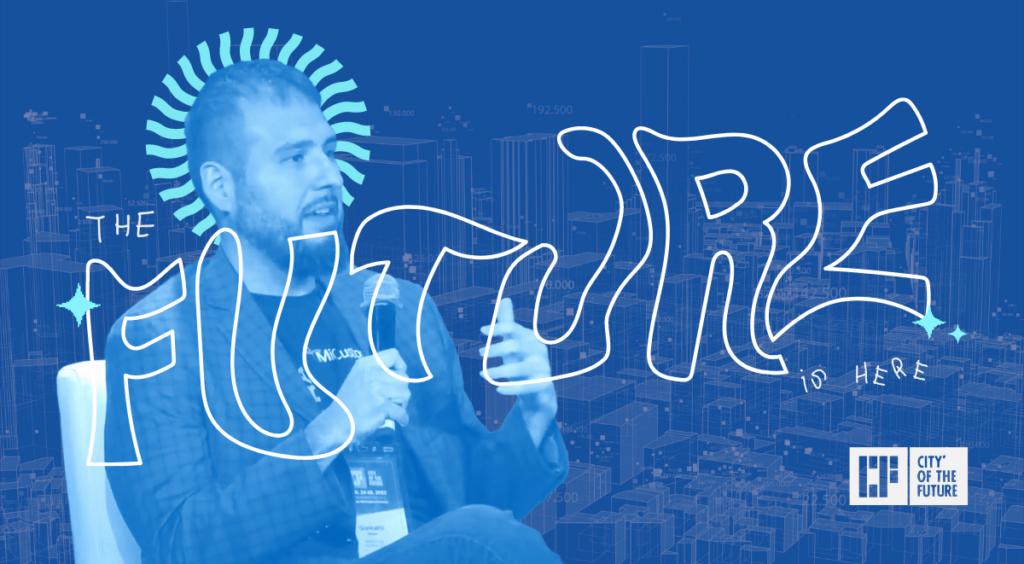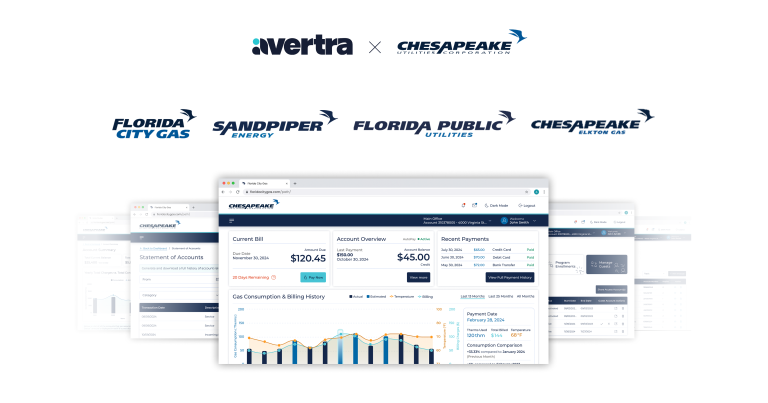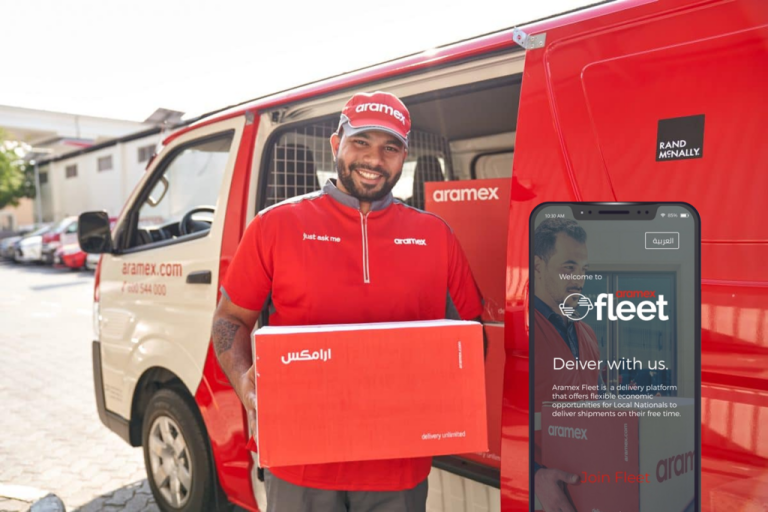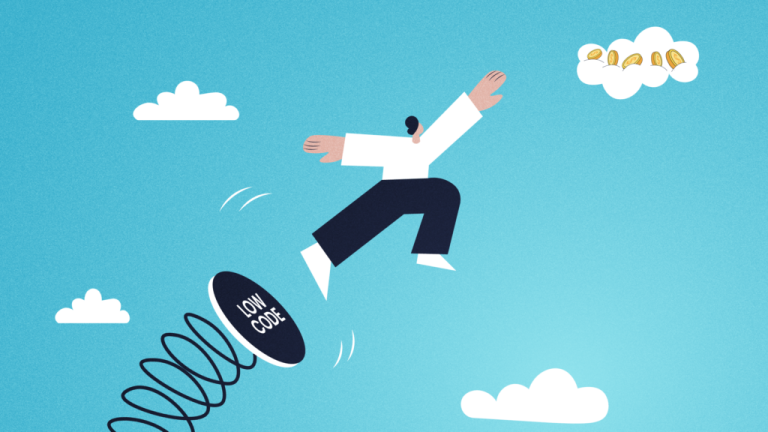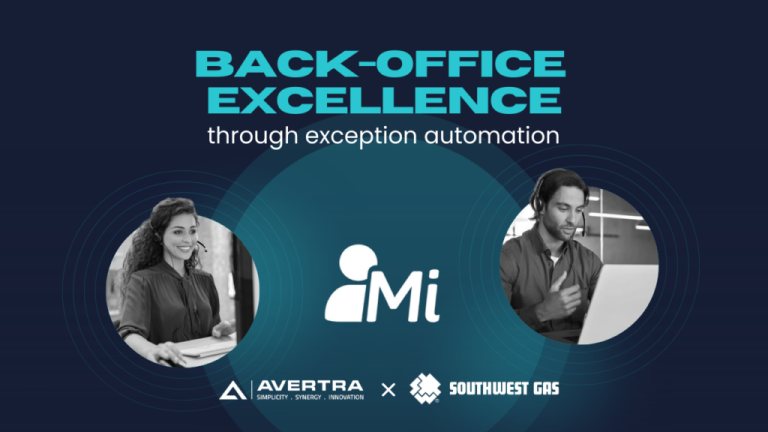In what ways can end users benefit from digital tools and strategies used by utilities to achieve operational and administrative advantages? This session aims to explore how utilities can formulate long-term strategies to improve the customer experience. The panel will also address customer expectations and demands, which may prompt utilities to consider investment and strategy options that they may not have been taking seriously enough.
How is digital innovation affecting customers and the workforce? What are you working on in terms of digital innovation?
Thomas Kuczynski:
Good morning everybody. Thomas Kuczynski. I’m Vice President of Information Technology at DC Water. I’ve been with DC Water since August 2013. We operate everything from basic payroll accounting systems, customer billing systems to everything that operates our facilities. To give you a quick sense for how big we are: we deliver about a hundred million gallons of water a day to the District of Columbia, process about 300 million gallons a day of wastewater in the largest advanced wastewater treatment plant in the world, we have about 1,900 miles of collection pipe, and we got about 1,300 miles of distribution pipe. From a digital perspective, our applications touch everything from customer service to employee engagement, but also now, are including things like artificial intelligence and machine learning algorithms to support predictive analytics and operational improvements in the utility.
The biggest challenge we have is given the size of the community we serve we have about 135,000 meters. We read those everyday four times a day. But beyond that, we serve about a million residents, about 1.5 million workers in the district who use our services, and about 20 million visitors a year who use our products and services. The reality is that each has different expectations on the information they’re interested in, how they want it delivered, and the depth of that information, so that’s a huge challenge for us right now.
Josh Gould:
Sounds good. Great to be here. I’m Josh Gould. I lead Duquesne Light Company. I also serve as our director of strategic planning, which is basically what we prioritize and spend our money on. Duquesne Light is a medium size utility. We’re based in beautiful Pittsburgh, Pennsylvania. We serve most of Allegheny County in which Pittsburgh is based. So dense urban, downtown area, some suburbs which are rapidly growing, and then we also serve Beaver County to the North West of us bordering Ohio, and it has some rural areas as well. So we’re in a unique position and we’ve got about a million and a half or so people that live in our service territory, of which there are almost 750,000 customers in terms of accounts slash meters. It’s a unique size. We like to say we’re big enough to matter, but small enough to move quickly.
One of the biggest things we’re working on and is part of the reason why I’m here is we have partnered with Exelon Utilities, a Pepco operating company here. We all run and manage underground electric networks. In terms of innovation and digital there isn’t much innovation and digital down there, and we want to try to change that. That is one of the things that we’re doing is running an innovation challenge around improving our approach to methods to monitoring the state condition of our underground network, which is one of the places where, if you think long-term electrification, reliability is actually higher when you put it underground. But if we start undergrounding everything right now, we do not have the amount of information we want on the state and health of our underground network. So we’ve reached out to the community publicly to look for solutions to improve that. So that’s one of the offerings.
The other thing is we think a lot we can improve the customer experience. A couple decades ago, utilities, we didn’t even refer to them as customers or rate payers, right? Or meters. So when we think about improving that customer experience, as a trusted energy advisor, as our ambition, we actually, and this is maybe counterintuitive, we believe it starts with employees. So making sure that employees are empowered and have the right digital tools to provide that experience. We have some, I would say scars, but also some successes in coming to that realization. So I can talk more and give a couple more examples about some of those digital tools that we’re deploying for our first customers, the employee but with the expressed intent and some KPIs around how to improve the customer experience.
Giancarlo Reyes:
Josh just described my company, which I’ll get to in a second. But first, good morning everyone. Our CEO actually apologized. He was supposed to be a presenter today, but he has a cold, so I found out this morning, dropped off the kids, and luckily I made it here on time. Thanks for having me here. I’ll do my best to improvise. GC Reyes, Founder and Chief Customer Officer at Avertra Corp. What we really specialize in is providing customer and experience solutions for our partners, primarily utility customers. So everything from the meter to cash lifecycle. Builder portal is where we automate new construction application within our productself-service portal, process automation solutions around the front and back office. Our headquarter is in Herndon, Virginia. We have offices in Pune, India and Amman, Jordan. What I’m looking forward today is I love solving these pain points. It starts with the employees. Providing the right tools that enable your employees will lead to an enhanced customer experience. So thank you for having me.
How have the people that you serve evolved? How are they changing what they’re asking for from a utility provider?
Thomas Kuczynski:
The first thing is they’re asking for almost everything today compared to yesterday. The models changed from a pull model, from an access perspective to a push model. The customer’s no longer the meter. We have 135,000 meters, but we have over three quarters of a million users that sit behind those meters, and that’s been a big challenge for a lot of utilities in understanding the actual customer, which is the person that’s using our products and services, not necessarily the one that we just send the bill to.
So we have the challenge of being able to provide information to not just the metered or billed customer, but the customer actually uses our products and services in a more efficient way using a push model more than a pull model. So people aren’t calling us anymore. We do have people that call us, but we have a range of users. Some call us, some want to use our online services, and some want to use our online services on mobile phones now, which actually dramatically changes the way you design those solutions and deliver them. But the depth of information that people are asking for today is also a lot deeper than it used to be in the past.
Before, it was simply questions about my last bill or why am I being charged this rate versus that rate? Now, it’s a history of bills. Multiple years worth of bills that they want to have access to in real time. How do I compare to my neighbor’s bill? How do I compare to similar properties within the service territory that you supply? Am I the average customer that you talk about when you publish your new rates today? When you say your average customer’s bill is going to go up by 5%. Am I average, below average, or above average? But even beyond that, many large office buildings in the district have property managers. They want to know more details about that building.
They don’t necessarily even want to what my last bill was. They want to know what my usage has been over the last 15 minutes. They want to be able to download that information. They want to put it in their own predictive models so they can optimize their water consumption. Then there’s a whole range of operational statistics that people are interested in. How many main breaks have you had? Where have they occurred? How long was the service out? Have you had sewer overflows? Where have they occurred? So the range of information is much broader than it was 20 or 30 years ago. The individuals that are asking for that information are very different. In the past, we didn’t know who was behind the meter. Now, we have a responsibility to understand who’s behind that meter, not only because they’re asking these same questions, but we also have to communicate with them when there are emergencies in the district as well.
Where are you seeing an opportunity for digital innovation for your workforce when considering safety protocols and managing the utility efficiently?
Josh Gould:
The first word that comes to mindand it sounds obvious and basic, but the larger the organization isthe greater the absence of the following, which is listening. First listenand seek to understand instead of being understood. I’ll give you a couple of specific examples of this related to digital innovation. I talked about the innovation challenge that we’re running to improve our underground electric network. Especially for people outside of our industry, I think what oftentimes people don’t understand is it still happens in this industry far too frequently that people don’t go home the way they came in to work. Safety is still a real issue. In Southern California, an employee lost their life just last week. It started with how do we prevent that from ever happening again? We had a major safety incident in our underground network in April 2021, which was the genesis of this challenge. What we did for four or five months is we talked to as many people internally as we possibly could. What caused this issue? What were the contributing factors? What do you wish you had to avoid that issue in the first place? And instead of jumping to a solution, we wanted to deeply understand that to get at the root cause and solve that problem, and essentially, what we uncovered is there was nothing that we felt would sufficiently solve the problem that we were aware of on the market, hence why we wanted to open this up to an innovation challenge.
So why am I giving this example? If we just would’ve taken that model where we said we’re from the innovation center, we think we have a solution to your problem, it wouldn’t have gotten anywhere. Instead, the employee who was injured is actually now a champion of this effort. He doesn’t want anyone to be in that situation, but also he can see that the information and advice that he gave us is what we’re acting on right now, and we’re addressing that problem. And again none of that is rocket science, but you would just be surprised, particularly in an organization, how much we just forget to listen to people. So let’s start by listening with people and then that will better define the problem to be solved. We’ve also built an app for employees that lets them report an issue, particularly as it relates to their assets. But again, that was off the shelf. The digital part of that was easy. We had the resources internally, we built it with off the shelf stuff. The hard part was the cultural part, which is we actually have to listen and understand what the problem is before we go out and fix it. So that’s why I talk about digital.
GC, how are you trying to help the industry be more proactive in communications with people, whether that be back of the house or people who are users?
Giancarlo Reyes:
For utilities and cities it has to be a data driven approach which will help reach and engage to their customers. So for a few examples, predictive maintenance insight of the usage, and behavior pattern of your customers should be able to notify your customers in advance, right? For potential outage or leaks within a household. Another is John Doe, who’s a good paying customer and has consistently paid their bills on time, but the last two months, they have not paid and it could be due to an adjustment in that household income. Well, let’s offer the customer some programs like budget billing, payment arrangements and assistance programs as well. So I think this is an approach that would help reach out to the customers, where traditionally, and it’s outdated the call center has been typically reactive, right? That’s a mindset that needs to change. It starts with the leadership and going back to Josh’s comment earlier, it starts with the employees, right? From the leadership down, making sure there’s clear alignment and objectives defined. I believe that’s how we could be practically communicating to the customers.
Do you anticipate a lot more coming in AI machine learning in the future of our digital innovation?
Giancarlo Reyes:
Absolutely. Going back to proactive communicating mobile app I think is a way of communicating with customers. For myself, the only time I’m on a web app is work related. So during business hours is the only time I’m on the web. Other than that I’m on my phone device. I use banking as an example. When there’s potential deficiency, I get a text message right away. So that’s the mindset that utilities and the cities need to have for the customers to serve them. It’s expectation, right? The younger generation, I see my children, they’re very impatient. They want to be notified and have control, and so we have to have that flexibility for our consumers.
Tom, I know you’re dealing with this head on with the whole segmentation aspect of it. You’ve got crazy early adopters like me, and then you’ve got people who are still needing to hear that information or receive information in different ways. So how do you manage that, especially from an equity standpoint? How do you work through that so you’re making the right investments?
Thomas Kuczynski:
I think there’s two approaches. There’s the obvious return on investment or benefit that can get created, and from an application we have a range of users that we serve. People who are tenured versus people who are young. Tenured folks tend to like the telephone and we have a group of users that are using the desktop, which is where we focused a lot of our initial digital apps. But now, we’ve got a large group of users who’ve actually used the mobile phone, and that’s become the platform of choice and will become the platform of choice going forward. Whether that’s via voice or via visualization we need to take all those things into consideration when we build apps now, but we can’t abandon our old service channels either because there’s still people that engage with us on a regular basis through that channel. So we need to continue to maintain those while investing in the future. I think the challenge is recognizing when you need to start to make that transition more aggressively. So we can’t not provide those online services. We can’t not provide that mobile solution. But the extent to which we make that investment and timing of that investment is the decision point. It’s not whether or not you’re going do it, you’re absolutely going do it.
As GC pointed out I live and die on my phone today. I can do anything on my phone from a work related or customer perspective that I could do on my desktop before, or I could do on the voice phone before. But this device has become our lifeblood in engaging with our customers and employees now. The pandemic has made the office the exception, not the rule anymore. Many of our employees work from home and we gauge them over these same channels as well. I think it’s a timing issue to the extent that the level of investment is made. The hard choice is when you abandon those old channels as well. But again, the data gives you insight into that as well as people start to use services less and less and less then we have an opportunity to abandon them. Ultimately I think, the mobile device is going to be the platform of choice going forward.
Josh Gould:
I have a story that’s relevant to this in terms of how do we think about meeting customers where they are based on what their needs are? It starts with making sure you have the right people at your company to understand what a customer wants from his or her experience. One of the stories that stuck with me was, we had a customer call in to the call center about their bill. This customer was going through a gender transition. They wanted to make sure the bill had the proper name. Part of being customer centric is spending some time listening to the calls from the call center and we’ll look at like chat logs and things like that as well. The level of grace and empathy that this call center employee met that individual with at that critical moment is not particularly digital, but it required having the right person in that seat who was able to empathize with that customer. It all starts with people understanding your customer’s needs and being able to react them requires having the right people represented internally, and this case stuck with me so much. You could hear the gratitude of the customer on the other end of the phone and I can’t think of a moment that matters more than that. Digital tools matter, you want to enable that for the customer, but the right person who understands that need internally is the prerequisite behind all of it.
How are you thinking about future products and services? How do you prepare the employees and market? What does that process and journey look like for you and your employees?
Josh Gould:
We’re building a new product and service development capability so maybe check back with me in a year because I hope to be much further along than we are now, but we’re actually hiring someone full-time. One of the things that we’ve built already is we’ve done some benchmarking with other utilities, we have some priorities that are based on what our customers have expressed which was a priority to us. But a lot of what we built is what I would refer to as the foundation. So how are we going do and prioritize the work, and develop and deliver a product to market. Again, the employees and the voice of the customer are at the center of that. You wouldn’t be a utility if you didn’t have a stage gate process so we’ve build one for how we develop products and services. It has the particular piece of customer validation that you need at each step to move forward.
As you get to create a maturity in terms of what gets launched, there’s a higher bar for what’s expected. We start with an expressed, explicit, or implicit customer need for this product or service. If it doesn’t exist, then you don’t have any business in building this thing. Then you start to develop the product service. We have customer research, panels and then we have a group of what we kind of refer to as super users who are doing beta tests for these products or services. You can literally see in our stage gate process where and how the customers are represented at every step of the way. So I wanted to illustrate how you need to be close to the customer. They are at the center of it. What does that actually mean? This is just an example of how you build it in that process. And again, you don’t move through the gates and it doesn’t get to market if you don’t have that customer validation, and we try to build that in the process.
How do you ensure that the customer experience is uniform and streamlined, and like a good customer experience?
Giancarlo Reyes:
If we look at one use case today, like start and stop service, which is one of the top processes for any utilities, typically a customer has to log into an online static form. They fill out the information and it’s routed to a queue where a generic email address and back office have to go in and manually enter the information in the CIS system. I’m actually a former utility employee and so I started off at a very young age. I came right out of college and into utilities, live and breed utilities. So I have a great deal of passion for it. And just like you Josh, I was like, this is horrible.
One utility up in Northeast have a backlog of start and stop service in their queue. At Avertra, we partnered with a local utility here, Fairfax Water where we automated that entire process. We got some resentment from the head of customer service because they didn’t think it was possible. Through our self-service portal, customers would log in – similar process, right? So they entered their information through a form, their profile, and service hazards. But behind the scenes, we’re actually processing everything in real time to their CIS system. We’re creating customer information, moving them into the property, creating the work orders, performing customer identification, and sending a welcome letter as well. In real time, customers get an account number and can also pay a deposit.
Prior to our solution, they had to wait a day or two to pay their deposit. Within our platform, we have over 200+ different scenarios, which you wouldn’t think there are within start service. There’s landlord tenant and the persona type as well. So there’s all these different scenarios that we captured and we went live successfully last year and now, 50% of their stop services were processed through our platform and 30% of their start services. Immediately, they recognized the benefits. We’re enhancing the customer experience, while also improving the employee experience. So now their agents are no longer working on repetitive tasks and instead are working on assignments that have more enterprise value. In my opinion, utilities and internet providers will partner with real estate brokers or settlement companies because you have all that information of the customer, like their profile and property that they are moving into. I know today there are third parties that do provide that service for a fee, but it’s not fully integrated and automated, but I should have that ability. I’m moving into a property, my settlement is at the end of this month, I want all my services; water, gas, electric, and internet set up and integrated into the CIS system, right? So that to me is the next evolution of that process.
As we make investments in customer enablement tools, how do we cross pollinate some of those ideas and how does that affect what you’re doing with your workforce to ensure efficiency?
Thomas Kuczynski:
The important point is to make sure that the customer’s experience is as close as the employee experience. When you are in a situation where there’s a discrepancy, concern, or question, they’re able to communicate on an equal level. Customers have access to the same level of information as your office personnel have. The other side of this is looking at opportunities both within the business and on the customer service side where you can deliver tools that benefit both. For example, our high usage and consecutive usage app that analyzes meter information on an hourly basis and determines if there’s a consumption anomaly at a customer level, has the ability to notify a customer in almost real time that there’s a potential problem at their property. That has been a tremendous benefit on the back office because it almost virtually eliminated high bill complaints because we’re telling people days in advance of a bill being issued that there’s a potential problem at your property that they should address right away.
We provide insight into what the possibilities are and people can go and address it. Above that, we get thank you letters about our about our technology because people are happy that that problem have been resolved. I mentioned earlier the property managers and their desire to have detailed information about these large properties. We’ve been able to produce that information and deliver it to them, and they can do an analysis. But then we found that when using the same information internally, we can improve our meter maintenance program by analyzing the actual meter itself and finding meters that are degrading at a different rate than typically because of the usage differences in properties. So a six inch meter operates very differently at different properties. And we’ve been able to look at that and then change our internal processes rather than doing a calendar scheduled maintenance activity to actually usage-based maintenance activity on a specific meter.
The added benefit to the utility is we avoid loss revenue because the meter’s not reading. But I think the biggest change for us, in the way we address internal requests for information has been driven by the way we’ve had to address external delivery of information. The techniques that we use for information presentation visualizations and things like that have dramatically changed because we’ve had to build solutions for customers that don’t understand the underlying detail of the information that we’re trying to actually present.
Our visualizations have changed very differently for that group of customers versus what it used to be for our internal users. We just generate a list and give it to Joe and Joe will go over there and figure it out. But also, the methods that we deliver the information with have changed as well. Our reluctance to provide access to information to our internal users has actually diminished as well. In the past, we’d ask a hundred questions, why do you need that? Well, our approach now is more information delivery and accuracy, and exposing as much information to the end user as we possibly can. By end user, I mean the internal user so that they can do their own analysis and analytics, and make decisions on how to best optimize their operation with access to the information without somebody producing a list that says, this is the piece you need to do your job. So we’ve released that control over the information to the end user and we’ve allowed them to use the data to answer their own questions rather than us trying to answer them.
How might digital innovation factor into your forward thinking? So strategically planning for the future, as you see more stacking of types of programs and incentives, how do you make this easier on you and employees to manage all of these different opportunities? And how do you make that customer experience better using digital innovation to help them identify all the possibilities that are going to be potentially available to them through the inflation reduction act?
Josh Gould:
I would start with going back to what Tom was saying. We refer to it as democratizing data internally. I think especially with utility culture, there’s an old school command and control. It’s all going to sit at the top and we’re going to parse it out in tiny pieces because we know all at the top and essentially what we’ve tried to do is try to democratize the data. There’s a lot of not always so sexy things that form a foundation for enabling a data lake or a data steward. Who controls the data? To what degree is that data? In some limited circumstances, there is a good reason to hold that data tight for privacy concerns. Thinking about what the standards are around that is not always the sexy work, but again, it goes back to employee experience.
Democratizing that data is a necessary foundation to empower our employees and to give them the right tools so that they can enable that customer experience and program that draws on the IRA incentives. We’re talking to our skilled trades about what a collaboration would look like for a heat pump program where the scarce resource isn’t actually necessarily the dollars, but it’s the skilled folks who are going to install. Again, it goes back to people and listening. Our customers want to be educated on that, or at least some of them do. But many of them want the experience to be more seamless. I don’t want to have to learn about what’s the right heat pump model. What are the economics gonna look like? You’ve made that seamless because you have the right data and people internally have access to the resources that they need and are empowered by a culture that enables that customer experience to happen. So I go back to the foundational pieces. Democratize the data, empower your people, and that’s gonna set you up for success. You get the right people in those seats who can develop those programs and make the customer experience seamless.
Giancarlo Reyes:
I’ll give my feedback on it. One thing I’ll add to it. I agree and it starts with the people. That’s one thing that we provide with Avertra. Enabling the team. This will lead to enhancing customer experience. So, the front office and back office agents front office in the future, will operate and work under an operational environment where they’re monitoring digital transactions of the customers and working on unique cases. Hey would also become more like analysts and enable bots or AI to learn new business process scenarios. This would require a new skillset resource, like Josh was alluding to with regards to people. So, someone more tactical and analytical who reviews these digital transactions of the customer disputes can now be handled through these channels. Self service, is all handled through digital transactions. So, empowering the resources within your front and back office will lead to enhancing the customer experience.
What is your digital innovation wish list item for the coming year or two?
Thomas Kuczynski:
It’s predictive analytics. There’s a tremendous opportunity for us to use the data assets that we currently have and build models that are capable of potentially predicting future events and then moving us from a more reactive to a proactive response from a maintenance and a support perspective. That’s across our infrastructure assets as well as our customer experience.
Josh Gould:
We see tremendous potential where electric only utility in a clean energy future for all by driving greater electrification. One of the highest impact ways to do that is a heat pump. Looking at that customer experience, there are so many points of friction. We’ll see if we can do it over the next year. It’s a bit ambitious, but trying to remove the points of friction from that process so that a customer can more seamlessly electrify. So, starting first and foremost with a heat pump. So that’s on top of my wish list.
Giancarlo Reyes:
I would say VR training. Going back to focusing on the employee and offering VR training for the field services technician on how to change the meter, install pipes, which tools to use, I think that will be emphasized in the next 12-24 months.
In today’s digital age, utilities have the opportunity to leverage various digital tools and strategies to enhance their operations and administration. However, it’s equally important for utilities to focus on the needs and expectations of their end users and prioritize the customer experience. By formulating long-term strategies that address customer demands, utilities can not only improve their relationships with customers, but also uncover investment and strategy options they may not have previously considered. Ultimately, the success of utilities will depend on their ability to strike a balance between operational efficiency and customer satisfaction. Let us help you get there.













